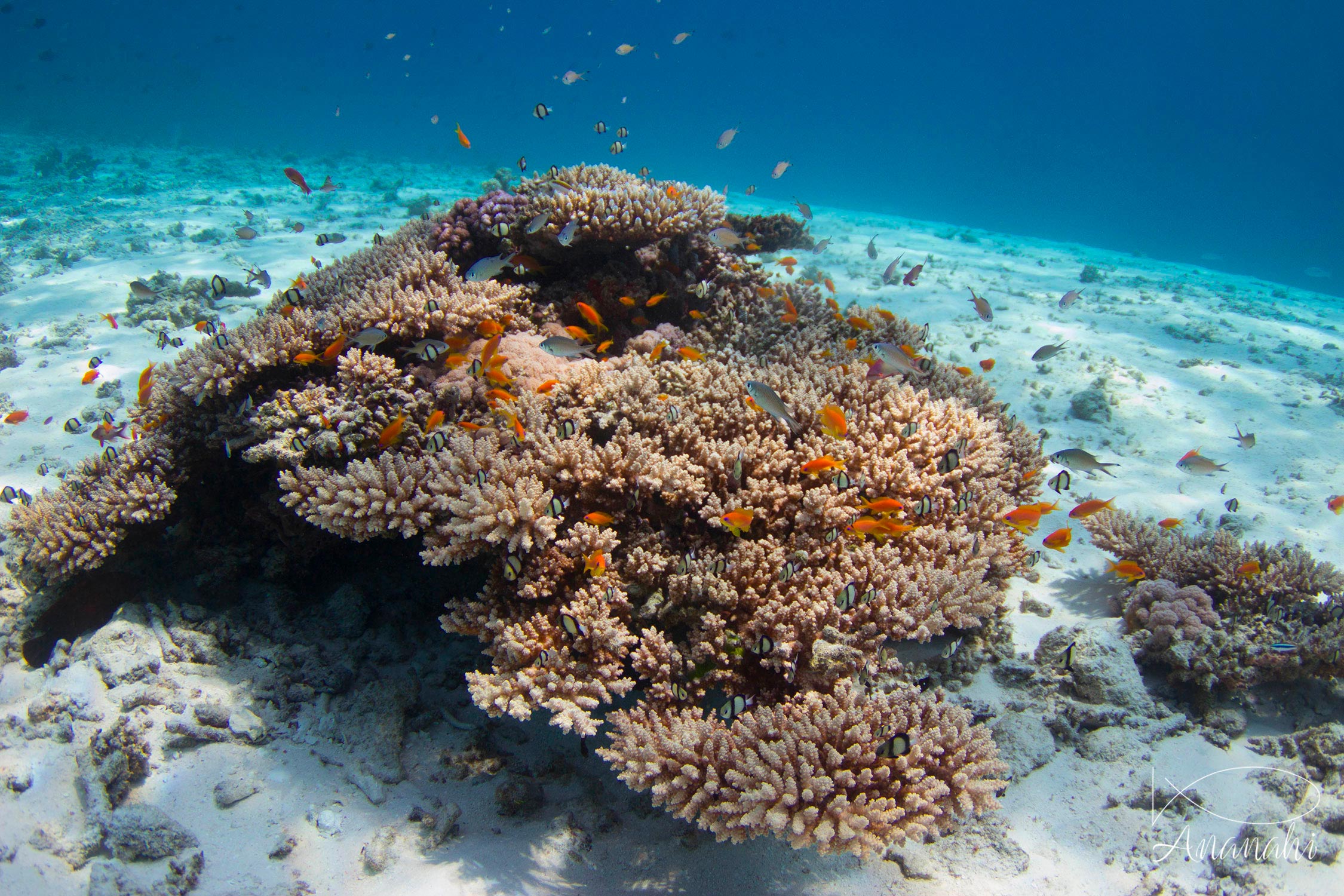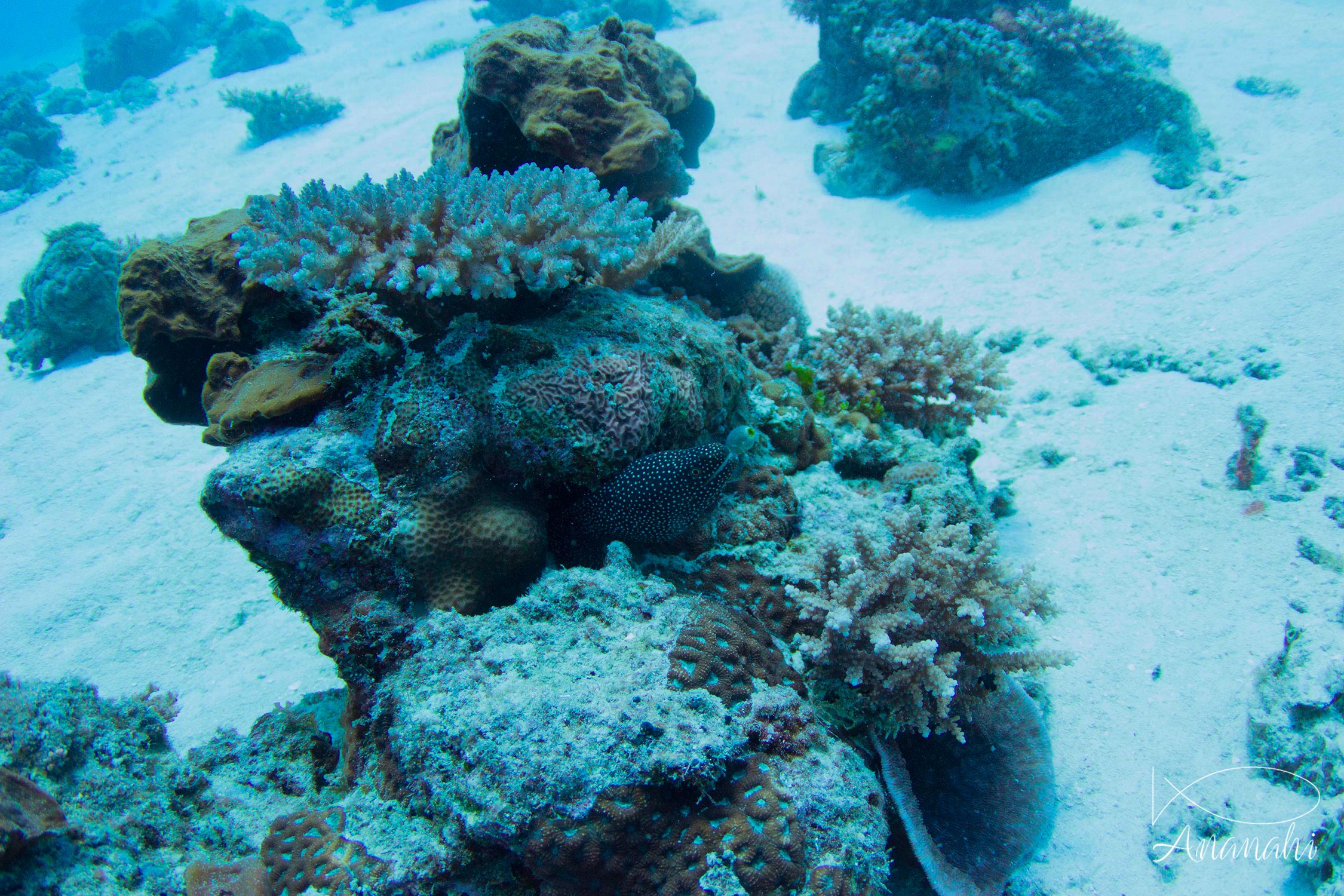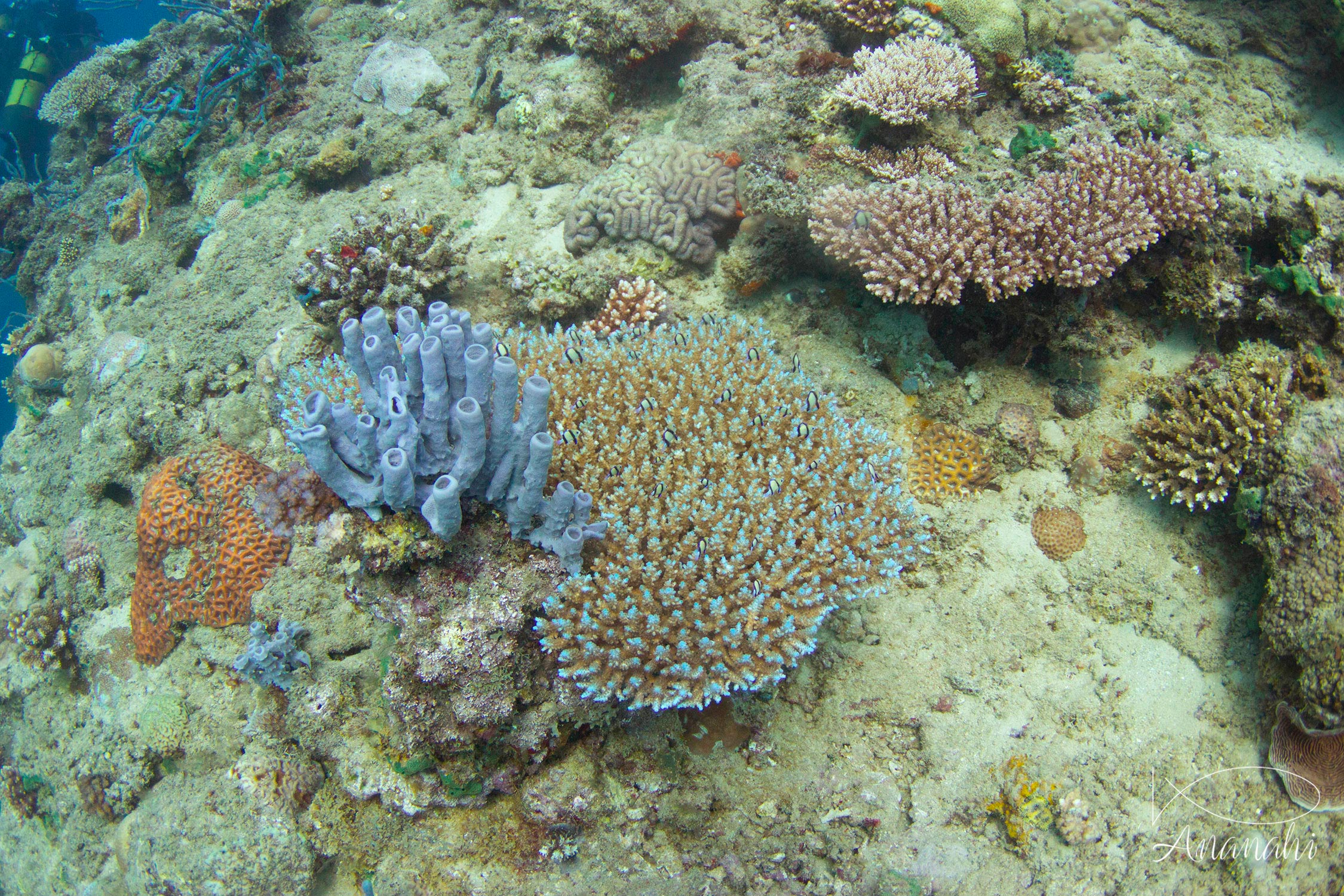
Scientific name: Acropora
Size: From 6 inches to 10 foot
Color: Brown, beige, blue or red
Distinguishing feature: Bushy and branchy or in horizontal plate. Composed of a multitude of excrescences like fingers.
Where did we see it: Bali and Gili, Zanzibar, Thailand, Mayotte

Scientific name: Acropora
Size: From 6 inches to 10 foot
Color: Brown, beige, blue or red
Distinguishing feature: Bushy and branchy or in horizontal plate. Composed of a multitude of excrescences like fingers.
Where did we see it: Bali and Gili, Zanzibar, Thailand, Mayotte
Acropora coral is one of the most present on the planet. It has a multitude of different types (about 180) and it is difficult to differentiate them without taking several pictures from different angles and at different distances from the coral.
To develop themself, these corals need warm water (over 20°) and lipid water with a lot of light. This allows them to be one of the corals with the greatest growth, about 3.2 inches / year.
Its skeleton is fragile, so be careful if you put your fingers on it!!!
Depending on their environment, these corals may change color (blue or red for example).
This coral is not threatened, even if the population decreases. But some of its species are on the red list : they are very exposed to the phenomenon of coral bleaching.





We can hear the bull shark is very dangerous because of attacks near La Réunion island.
However, tens of them are living at 600 feet from the famous beach of Playa Del Carmen in Mexico. And there are no attacks.
Mammals have a horizontal tail.
Fishes have a vertical fin.
Parrotfish create a protective envelope around them when they are sleeping.
So, don't put the light on them during night dive to don't to wake them up and break this envelope.